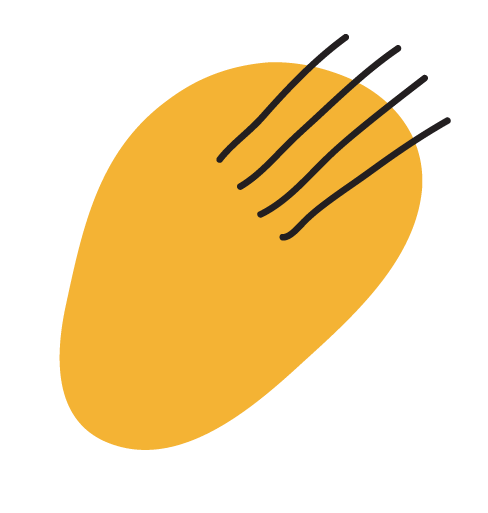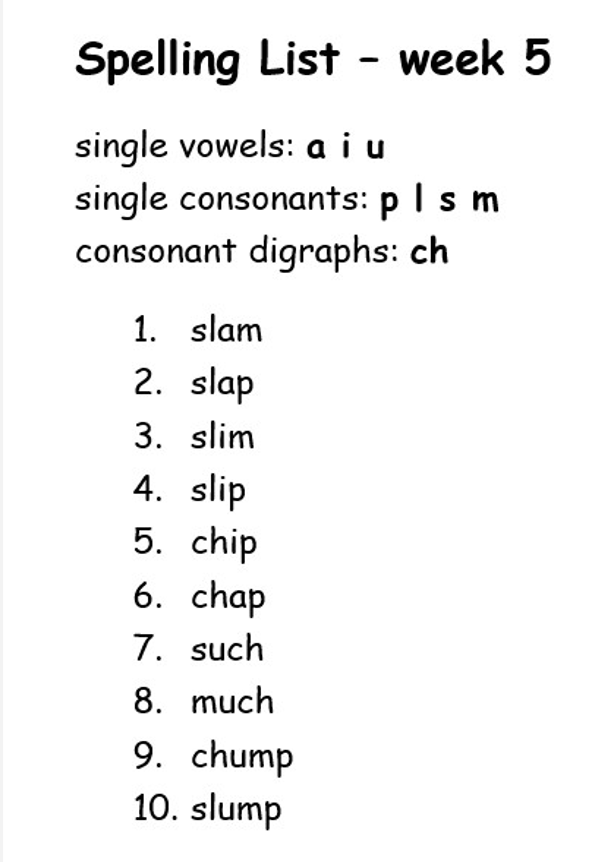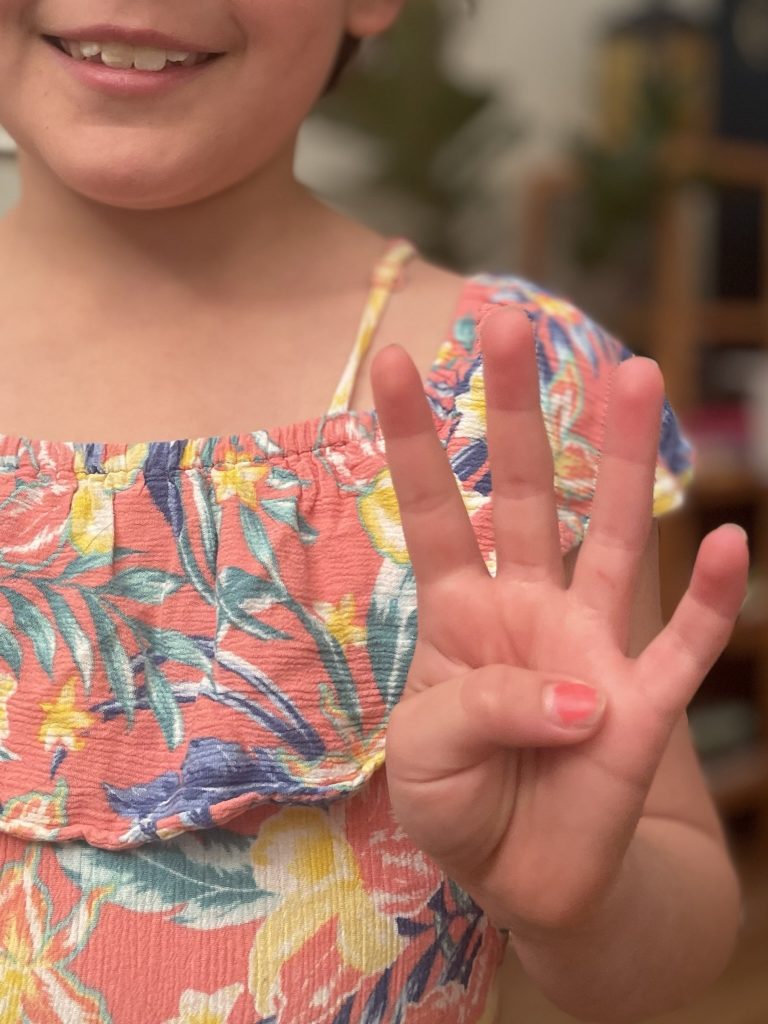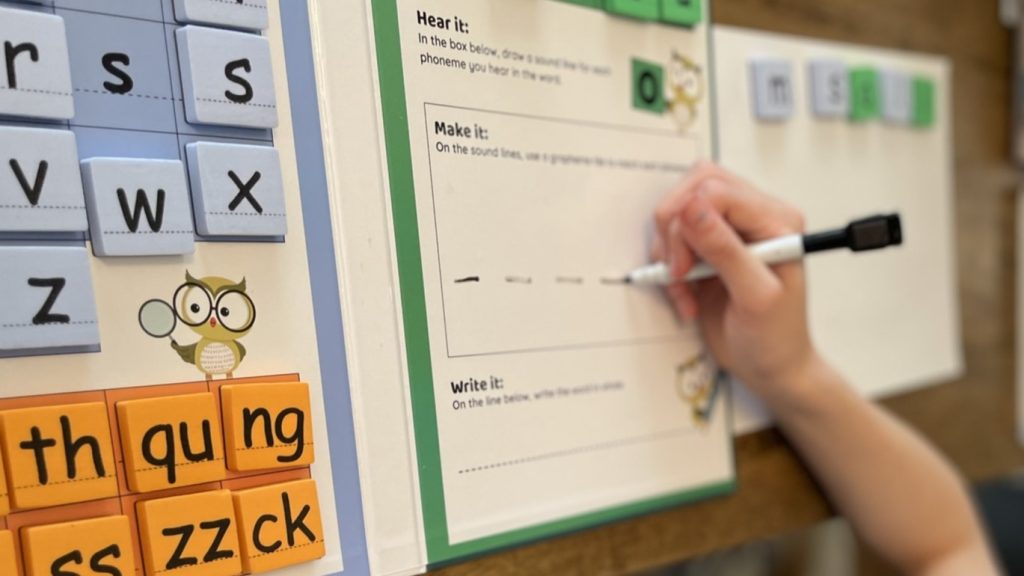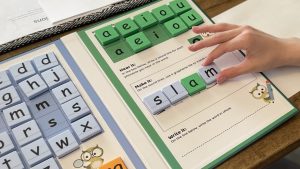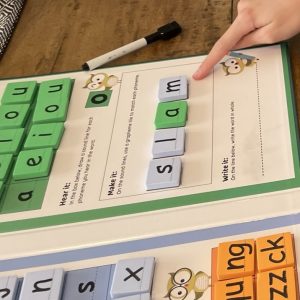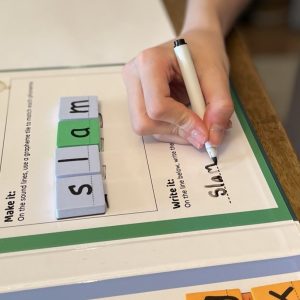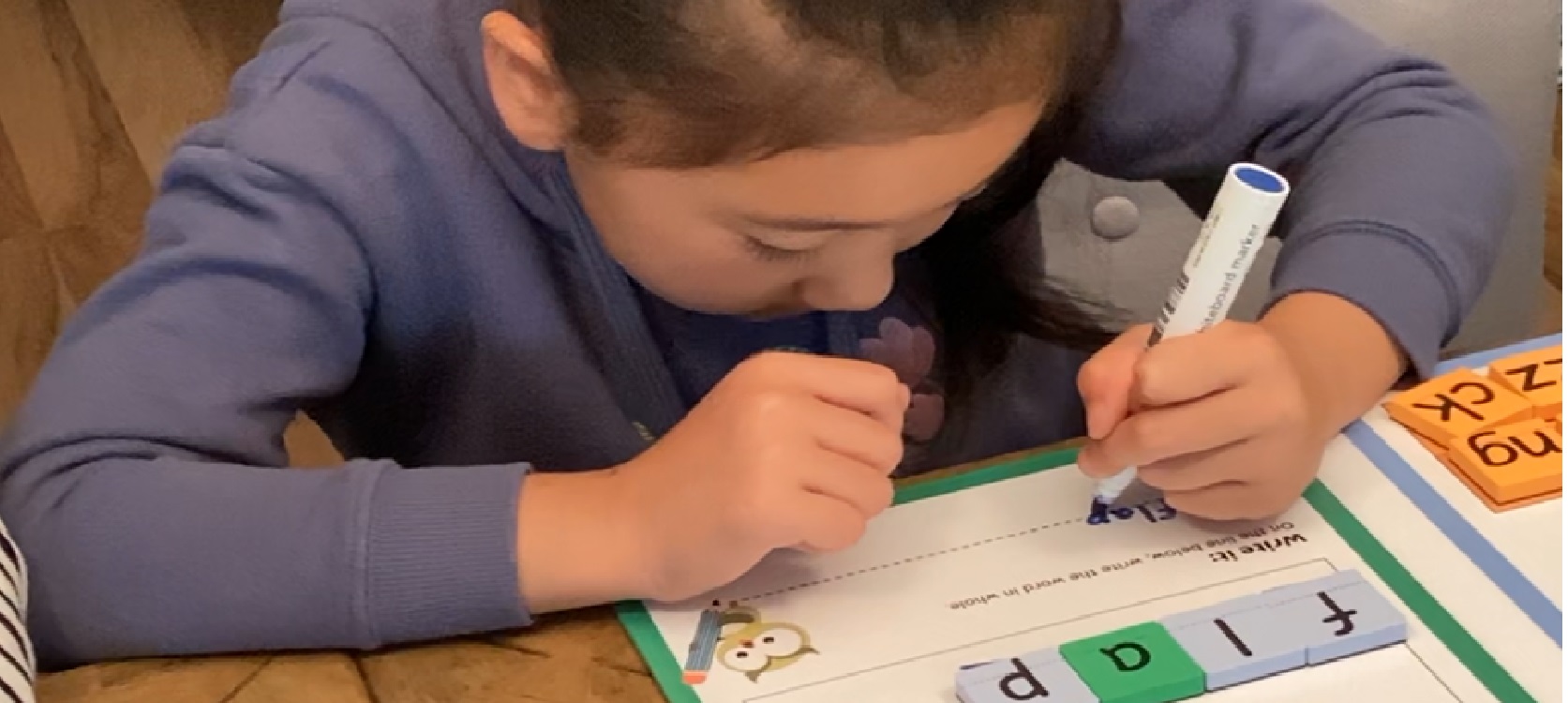
For Educators
The Powerful Vowels kits can be used for word building (decoding and encoding) practice for whole class, small groups or individual intervention.
This tool is most effective when used with a phonics-based spelling program. There are various scopes and sequences that are effective for early phonics instruction. Regardless of the program you choose, children build competence much faster if you stick to one and follow it with fidelity. A phonics scope and sequences is by definition carefully constructed to increase in complexity in a gradual and systematic manner which leads to mastery of decoding/encoding of words very efficiently.
You can find quality scope and sequences provided by the NSW Department of Education and SPELD NSW.
The English spelling system is complex!
Promoting success builds confidence and engagement.
Follow our simple step-by-step tutorial to get started with
Powerful Vowels in the classroom.





